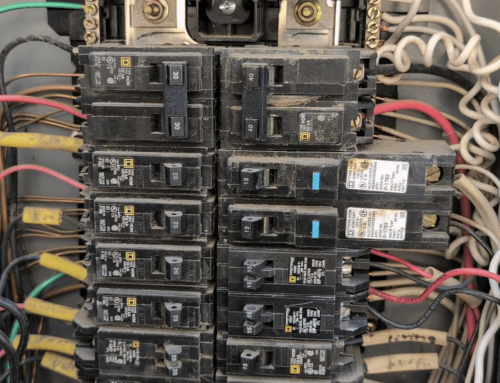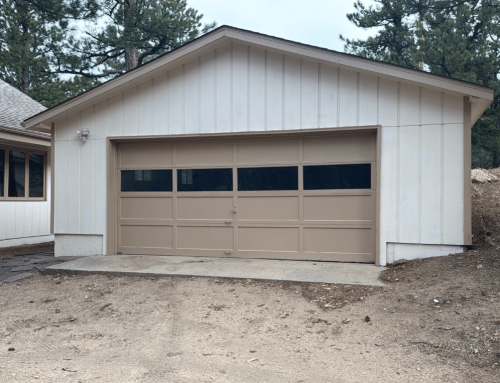The Problem With Galvanized Supply Pipes
Date Published: August 3, 2021
Galvanized supply pipes are still fairly common in older homes around the country. It was a commonly used piping material before the 1960s.
The pipes were seen as a cheaper alternative to copper and a better alternative to lead, which was commonly used when the piping material was invented.
The pipes were dipped in a galvanized coating to prevent rusting and corrosion. Unfortunately, as it goes with many building materials, the pipes did not stand the test of time.
Many of these pipes have an issue present, but you may not be able to see it…
Galvanized Supply Pipes and the Rusting Problem
Galvanized pipes are made out of steel. Steel is a material that rusts over time with exposure to water.
However, the piping was coated to prevent this. Over time, as pipes were removed from homes, rusting was found on the inside of the pipe. The rust would slowly build up on the interior walls of the pipe effectively shrinking the diameter of the pipe itself.
This shrinking caused a range of issues. On the minor end, some of the taps of the home could have lower water pressure than other areas. While most of the time this is pretty unnoticeable, it could get worse over time.
One sign of rusting galvanized supple pipes occurs when you first turn on the tap. If a sink supplied by steel pipes hasn’t been used for a few days and then turned on, the user may see discoloration of the water. The brown hue is rust residue that has mixed with the water. Not great for drinking or bathing. However, this can usually be mitigated by flushing the fixture before use by letting it run for several seconds.
Our Water Quality Test add-on can help determine the quality of the tap water in a home. Learn more about this test here.
The largest issue is leaking occurring around fittings. This is fairly common and it is easy to spot as you will see rust around the edges of the fitting itself.
Galvanized pipes have threaded fittings. Where the pipe is threaded, the wall of the pipe itself is thinner. As rust builds up around this section, the pressure also builds, forcing water through these threads and rusting on the exterior of the pipe or causing a leak.
While we see this issue at home inspections often, it is less common to see an actual leak because the pipe tends to rust the leak closed.
However, once the connection at the fitting is brittle enough, the leak can become an ongoing problem.
At this point, the replacement of the pipe is the best solution.
It should be noted that these issues predominately occur on the supply side. Galvanized steel pipes were also used as drain and waste lines and these issues are far less common.
How To Spot Galvanized Piping
Galvanized pipe is easy to spot. It’s bright silver in color, and shiny, unlike lead piping. It also has very bulky threaded fittings, unlike copper or PEX piping.
Look at the fittings for rust spots or discoloration. These are also telltale signs of galvanized pipe. If the piping is painted, use a flat head screwdriver to scratch the surface and look for that steal metal color. Finally, a strong magnet will stick to the pipe, unlike copper or lead.
You can usually spot the piping in unfinished areas of a basement or crawlspaces. It is pretty rare to see it actually connected to a fixture at this point. You typically see it connected to a copper line before it connects to a sink or shower.
Other Issues with Galvanized Pipe
As stated above, most of the time, the section of pipe that physically connects to a fixture has been replaced due to remodeling or leaks over the years. Galvanized pipe is not known for being very workable, so after removing fixtures it can be difficult to connect a new fixture without leaks.
This leads to a different issue called electrolysis. Electrolysis occurs in pipes when 2 dissimilar metals are connected together.
Electrolysis: Chemical decomposition produced by passing an electric current through a liquid or solution containing ions.
When a copper pipe is directly connected to a galvanized pipe, the small electric current that that water carries begins to decompose the pipes. This is called “galvanic corrosion” and it is caused by electric current moving along the two different pipe materials.
While this is something we call out at our inspections, not everyone who works on indoor plumbing is aware of this. Many DIY individuals might not know that this reaction needs to be prevented.
To prevent this reaction from damaging your pipes, the electrical current must not pass between materials. A dielectric union fitting was invented for this reason. You can connect galvanized steel and copper pipes together without the metals actually touching each other which prevents premature corrosion.
This is now standard in most plumbing codes across the United States. While this helps with connecting copper to older galvanized pipes, these unions also help connect copper pipes to appliances like water heaters and dishwashers.
—
Hopefully, this gives you a good top-level overview of the problem with galvanized supply pipes. While we don’t recommend immediate replacement when we see galvanized piping, it is good to be aware of these issues, and be on the lookout as you live in the home.
Just like everything in a house, the plumbing system also has a finite lifespan, and pipes that are over 50 years old like most galvanize steel pipes are, have the potential to cause problems.
Have something to add to this topic? Comment below! If you are looking for a home inspection in the Colorado Front Range, see our inspection services page here.
Related Articles
If you enjoyed this article, you may be interested in some of our others.















